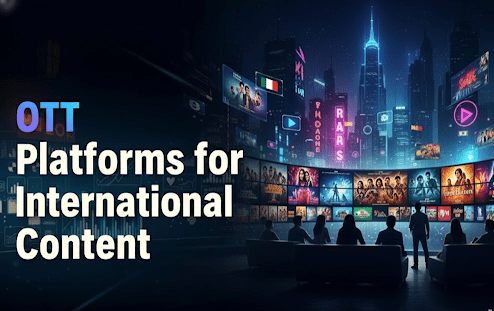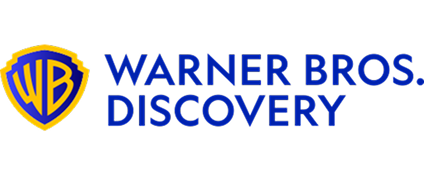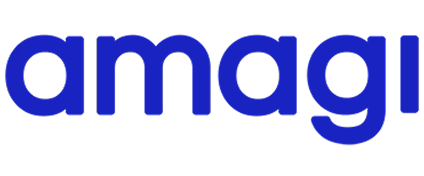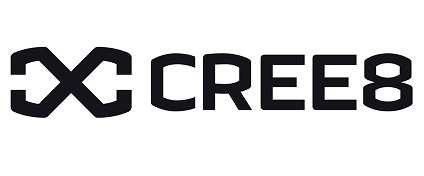OTT Platforms for International Content: The Definitive Guide for M&E Executives

Introduction
The global content ecosystem is no longer defined by geographic borders, but by the efficiency of its digital supply chain.
For the modern media executive, the strategic challenge is not merely if to pursue global content, but how to operationalize the acquisition, licensing, and distribution of film and television content across ott platforms for international content with speed and verifiable intelligence.
The market’s shift toward hyper-localization and niche audience cultivation means that content acquisition leaders cannot rely on outdated, territory-by-territory negotiation models.
The pressure to reduce subscriber churn and increase Average Revenue Per User (ARPU) demands a fundamentally new approach to securing rights.
Table of content
- OTT Platforms for International Content: The New Global Imperative
- The Core Challenge: Navigating the International Content Licensing Maze
- A Strategic Framework for International Content Acquisition
- Operationalizing Global Content Strategy: Data, Discovery, and Dealmaking
- How Vitrina Solves the International Content Visibility Crisis
- Conclusion: Mastering Cross-Border Content Strategy
- Frequently Asked Questions
Key Takeaways
| Core Challenge | The content acquisition process is fractured by opaque rights data, non-standard licensing terms, and a lack of real-time visibility into global project development. |
| Strategic Solution | Implementing a unified, data-centric content supply chain model that standardizes project intelligence and transforms content discovery into a proactive, strategic function. |
| Vitrina’s Role | Providing the essential real-time project tracking, company profiling, and executive contact data necessary to move content acquisition from a reactive negotiation into a predictable, high-value dealmaking pipeline. |
OTT Platforms for International Content: The New Global Imperative
The business model for over-the-top (OTT) streaming platforms is now inextricably linked to the depth and diversity of their international content libraries. This is driven by several macroeconomic shifts that fundamentally re-center the value proposition for media executives.
First, saturation in mature markets (like the US and parts of Western Europe) forces a pivot toward global expansion. Success in high-growth, underserved territories—such as LATAM, Southeast Asia, and India—requires content that resonates specifically with local audiences.
Regional content has become a core differentiator. According to a 2024 analysis by Variety, the appetite for non-English language programming drives disproportionate subscriber growth and reduces churn in these new international markets.
This shift in viewing habits means a platform must go beyond simply licensing US blockbusters; it must actively source and acquire Korean dramas, Turkish serials, and Spanish-language co-productions to retain its base.
Second, the economics of original content have made library acquisition a necessity. As platforms battle for exclusivity, the cost of original, top-tier production continues to inflate.
Licensing existing, high-performing international library content offers a cost-effective counter-strategy.
The ability to find and acquire well-performing shows that have established audience loyalty in their home markets—even if those rights are non-exclusive—is a crucial lever for filling content gaps and supporting localized distribution strategies.
The success of this strategy hinges entirely on having real-time market intelligence that verifies a title’s track record, rather than relying on distributor pitch decks.
The decision to license content for ott platforms for international content is no longer a secondary option; it is a primary, cost-mitigating necessity in a capital-constrained environment.
The Core Challenge: Navigating the International Content Licensing Maze
The operational reality of managing international content licensing is characterized by fragmentation, opacity, and regulatory complexity. For the M&E executive, this process introduces significant operational risk and impedes the speed of dealmaking. I will break down the three primary vectors of this challenge.
The Rights and Territory Opacity Problem
Unlike domestic markets with established clearing houses and standardized rights definitions, the global content landscape remains a labyrinth of non-standard contracts. The shift from traditional territory-based licensing to multi-territory or global licensing strategies has not been matched by a similar standardization in rights availability.
- Fragmented Data: Ownership and availability data often reside in disparate, non-interoperable databases managed by individual studios, sales agents, or distributors. Finding a single, verified source for a piece of content’s global rights status is virtually impossible without direct, time-consuming human outreach.
- The Geo-blocking Paradox: Platforms must navigate complex legal requirements and regional restrictions designed to protect local market exclusivity. While geo-blocking is the technical solution, the strategic problem is that rights data is rarely current or granular enough to facilitate automated compliance, leading to revenue loss or, worse, legal exposure.
Inefficient Discovery and Content Valuation
In a world where thousands of new projects are announced yearly, the traditional content scouting model is obsolete. Acquisition teams spend excessive resources tracking fragmented production announcements, attending markets, and cold-calling distributors. This manual, high-cost effort directly addresses one of the major pain points faced by executive persona: inefficient scouting.
Furthermore, accurately performing data-driven content valuation for international titles is nearly impossible without objective, external data points.
The executive persona needs to answer: How did this title perform in its original market? Who are the key players associated with its success?
Without verified production tracking, cast/crew collaborator data, and distributor track records, every deal is based on high-risk, unverified assumptions. This leads to inflated deal values and lower returns on investment (ROI).
The Talent and Partner Sourcing Bottleneck
The decision to acquire or co-produce international content requires more than just content rights; it demands high-confidence data on the collaborators behind the project.
An executive needs to know the cross-border distribution track record of a potential partner. For example, which localization vendors did a studio use for a successful show in Latin America? Which production financier has a history of successful co-productions in Eastern Europe?
The lack of a centralized registry for verified company profiles and contact details forces decision-makers to rely on outdated directories, referrals, or trade show anecdotes, a clear reflection of the “Difficulty finding international distribution partners”.
A Strategic Framework for International Content Acquisition
Moving beyond the challenges requires implementing a structured content acquisition strategy that prioritizes verifiable data over market noise. I recommend an executive framework based on three strategic pillars: Proactive Scouting, Data-Verified Valuation, and Integrated Dealmaking.
1. Proactive Project Scouting Over Reactive Bidding (Early Warning System)
The key to securing high-value international content is engaging with projects as early as the development or pre-production stage, well before they hit major sales markets. This moves the acquisition process from a reactive bidding war to a proactive partnership.
- Focus on Development Intelligence: Strategically track the output of specific production companies, financiers, and high-performing executive teams globally. Identify projects in development that align with your platform’s demographic and genre needs, allowing for early pre-buy or co-production discussions.
- Track Key Collaborators: Use verified company and executive data to monitor the movement of talent. If a highly-rated showrunner or director moves to a new project with a new partner, this represents an early signal of a potentially high-value international title.
2. Standardized, Data-Verified Content Valuation
A disciplined, objective approach to content valuation is the only way to ensure positive ROI in international deals. This requires consolidating multiple data streams into a single source of truth.
- Establish Performance Benchmarks: For any piece of content, the valuation model must include verified, external performance indicators. While audience metrics are internal (and non-public), executives can rely on:
- Financial Data: Known budget range or financing partners.
- Professional Recognition: Key creative talent track record, verified award nominations, and festival selections.
- Distribution Footprint: The number of countries and types of platforms (linear/VOD) that previously licensed the content.
- Audit Partner Credentials: Before licensing, rigorously audit the co-production or distribution partner’s track record. A partner’s reputation, ownership structure, and verified history of successful cross-border transactions must be a central part of the deal calculation. A key component of our strategic recommendation is leveraging tools that provide this level of due diligence. This is a central solution to the pain point of “Incomplete visibility into comp…”
3. Integrated Dealmaking and Rights Management
The goal is to streamline the execution phase. This means moving away from email-based outreach and toward a CRM-integrated pipeline for content deals.
- Verified Contact Protocol: Ensure every outreach is directed to the verified decision-maker (CXO, VP of Acquisitions, etc.), reducing wasted resources on unverified contacts.
- Digital Rights Ledger: Although platforms have their own rights management systems, the acquisition phase must begin with verified rights data from the content’s source. Tools that provide transparent, up-to-date visibility into a distributor’s current inventory and non-exclusive licenses accelerate the negotiation process dramatically.
Operationalizing Global Content Strategy: Data, Discovery, and Dealmaking
For executives responsible for ott platforms for international content, the primary function of content strategy is transforming the theoretical framework into an operational machine. This requires a three-step action plan focused on market intelligence and internal efficiency.
Action 1: Systematically Map the Target Supply Chain
To conquer content licensing, you must first map the content supply chain. This means identifying every entity from concept to consumer.
- Identify Global Production Hubs: Strategically target countries or regions showing high growth in original production, especially those with favorable co-production treaties. Beyond the US, a focus on Germany, South Korea, India, and Brazil is essential.
- Categorize Partner Types: Do not treat all acquisition leads equally. Categorize companies by their specific, verified role: International Distributor, Regional Financier, Localization Service Provider, and Co-Production Studio. This precision ensures that outreach is relevant and targeted, as the specific licensing needs for a platform depend entirely on the partner’s core business. For executives seeking to navigate cross-border distribution, this precision is paramount.
Action 2: Leverage Technology for Contextual Discovery
The era of relying solely on market travel for discovery is over. The competitive edge belongs to the platforms that leverage technology to filter and prioritize global opportunities in real-time.
- Use Project Trackers for Early Signals: Implement a tool that tracks film and TV projects from concept to release. This acts as the “early warning” system for the acquisition team, enabling contact 6-18 months before a title becomes available at a major market.
- Prioritize Localization and IP Clarity: The global reach of OTT platforms necessitates seamless localization. When evaluating a title, assess the IP’s clean chain of title and the availability of localization assets (e.g., source scripts, isolated audio tracks). The integration of robust localization planning into the acquisition strategy minimizes costly delays and ensures a smoother packaging-delivery process, a key element of the digital supply chain. Learn more about effective digital distribution and licensing strategies .
Action 3: Build a Data-Powered Deal Pipeline
The final step is to automate the business development outreach. Manual list-building and unverified email chains are cost centers.
- CRM Integration: The content intelligence platform must integrate seamlessly with internal CRM tools (HubSpot, Salesforce). This means executive contact details, company profiles, and project metadata are automatically piped into the sales/acquisition pipeline.
- Measure Deal Quality, Not Quantity: Track the ROI of deals initiated via verified intelligence versus market leads. This objective measurement reinforces the shift toward a global content strategy based on performance, not speculation. The focus must be on acquiring content that demonstrably solves the platform’s business problem—reducing churn, driving ARPU in a target region, or establishing a niche identity.
How Vitrina Solves the International Content Visibility Crisis
Vitrina is the dedicated platform for M&E executives seeking to navigate the complexity of acquiring and licensing content across the global supply chain.
It addresses the core pain points of fragmentation and data opacity by providing a single, verifiable source of truth for the ott platforms for international content ecosystem.
Vitrina’s core value proposition for content acquisition is rooted in its three pillars of verifiable intelligence:
- Real-Time Global Project Tracking: We track film and TV projects from the earliest development phase through to release. Our platform provides the “early warning” system executives lack, giving content acquisition teams the 6-18 month head start required to engage in pre-buy or co-production deals before a project is officially presented at a major market. This eliminates the “Lack early warning on upcoming film/TV projects” problem defined by the executive persona.
- Verified Company and Executive Profiling: Our platform profiles over 3 million verified executives and companies—including international distributors, co-production studios, and financiers—with up-to-date contact information and track records. Executives can instantly map a company’s ownership, deal history, and verified collaborators, which is essential for due diligence in cross-border distribution and licensing.
- Data-Driven Discovery Engine: Instead of keyword searches, Vitrina allows executives to find partners and projects based on specific, verifiable criteria: project stage, genre, financing source, production territory, and collaborator track record. This algorithmic precision means every search result is an actionable lead, transforming the time-poor executive’s search into a strategic competitive advantage. It is a powerful search engine designed for the business of entertainment.
Our platform is explicitly designed to shift the focus from manual scouting to confident, data-backed dealmaking. By consolidating intelligence on projects, companies, and executives, Vitrina empowers executives to move their entire content acquisition pipeline into a single, verifiable system.
To see how our platform can immediately benefit your streaming strategy, I recommend exploring our full suite of solutions here.
Conclusion: Mastering Cross-Border Content Strategy
The future of ott platforms for international content is defined by strategic foresight, not brute-force budget. The executive who masters the acquisition of non-domestic content will secure a decisive advantage in the global streaming wars.
This requires acknowledging that the content supply chain is the new battleground for subscriber loyalty and operational efficiency. The strategic imperative is to replace fragmented, manual processes with a unified intelligence platform.
By adopting a data-first approach—proactively tracking projects, verifying partner credentials, and ensuring international content licensing is based on objective truth rather than speculation—M&E leaders can transform content acquisition from a cost center into a predictable, high-ROI growth engine.
The time for relying on opaque markets and fragmented data is over; the time for verifiable intelligence is now.
Frequently Asked Questions
The main challenges are navigating complex, non-standard cross-border licensing agreements, enforcing IP rights across diverse legal jurisdictions to prevent piracy, and managing regional restrictions (geo-blocking) that limit the platform’s ability to offer content globally.
Streaming has generally increased the long-tail value of library content, particularly established international titles that can be used to anchor niche or regional content strategies. However, the value is highly dependent on the exclusivity of the rights and the performance data available to the licensee.
Localization, including high-quality subtitling, dubbing, and cultural adaptation, is critical for successfully monetizing international content. The availability of clean localization assets is a key factor in content valuation and a necessity for reducing friction in global distribution.
Smaller platforms should focus on niche, hyper-localized content acquisition and use data to proactively track projects in development before major market saturation. Securing non-exclusive, multi-territory rights for a high volume of high-performing regional content can be more effective than bidding on blockbuster originals.















































